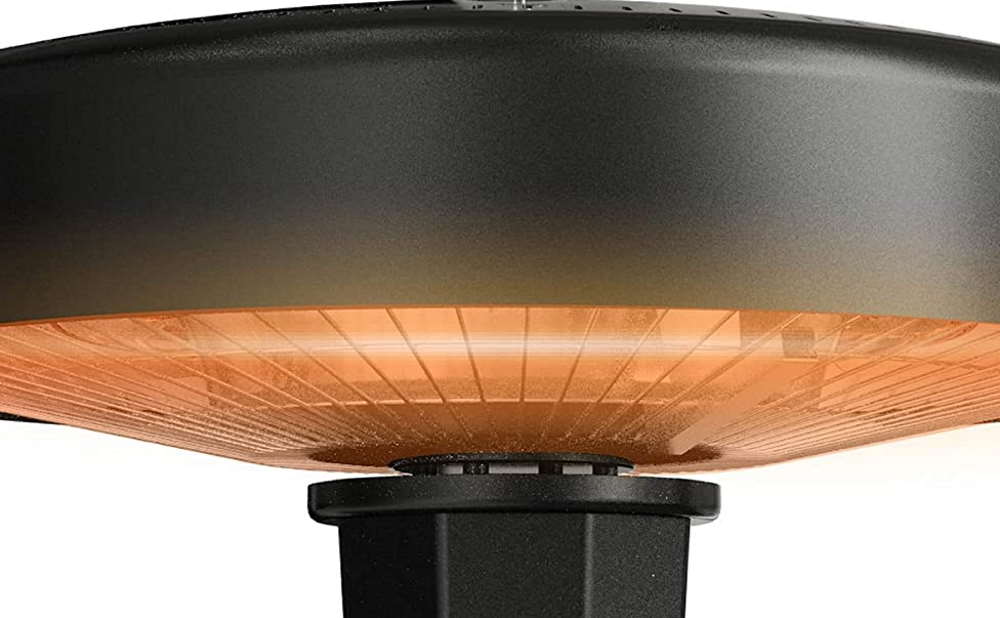The best outdoor heating option depends on your space, budget, and desired warmth. Some popular options include propane heaters, wood-burning fire pits, electric patio heaters, and natural gas fire pits.
Outdoor electric heating units typically come in the form of patio heaters or wall-mounted radiant heaters. Patio heaters are a type of freestanding electric heater designed for use on patios and decks. They typically use either infrared or halogen lamps to generate heat. Wall-mounted radiant heaters are usually wall-mounted electric heaters that use infrared radiation to heat up the area. They are often used to heat up outdoor spaces such as patios, decks, and balconies.
Other than that, many people use outdoor heaters powered by natural gas. Outdoor natural gas heaters are available in a variety of sizes and styles to fit your needs. These heaters provide consistent, reliable heat and can be used in outdoor spaces such as patios, decks, and gazebos. They are typically fueled by either natural gas or propane, making them a great choice for those with an existing gas line.
What the outdoor heating options are?
- Patio Heaters: Patio heaters are a great way to provide heat in an outdoor space. They are typically fueled by propane or natural gas and can be mounted on the wall or placed in the middle of the patio.
- Fire Pits: Fire pits provide a great source of heat, and can be used for cooking as well. They can be an attractive addition to any outdoor space and are easy to move around when needed.
- Chimineas: Chimineas are open-air fireplaces that provide a nice, cozy atmosphere. They often have a chimney that helps funnel the smoke away from the area.
- Outdoor Fireplaces: Outdoor fireplaces provide a great source of heat, and can also be used for cooking and entertaining. They are often constructed of masonry materials, such as brick or stone, and can be customized to fit the look of your outdoor space.
- Electric Heaters: Electric heaters are a great option for outdoor heating. They are easy to install and can be used to quickly warm up a large space.
How to choose a weatherproof outdoor heater?
Outdoor heating can be achieved with waterproof and weatherproof outdoor heaters. These units typically use propane or natural gas, and have a protective housing that is made to withstand rain, snow, and other elements. Some models come with a built-in thermostat for added convenience. Electric heaters are also available, but they are more prone to damage from water and other elements, so they should be used with caution.
- Choose the Right Fuel Type: Consider your heating needs and the size of the space you want to heat when selecting a fuel type. Some of the most common fuel types for outdoor heaters are propane, natural gas, and electric.
- Look for Weatherproof Features: Look for an outdoor heater with weatherproof features such as a corrosion-resistant finish, waterproof seals, and a sturdy base.
- Consider Safety Features: Choose an outdoor heater with safety features such as an automatic shut-off, tip-over switch, and child-proof control knobs.
- Check the Warranty: Make sure the heater you choose has a warranty that covers any potential defects or malfunctions.
Conclusion on the topic – Outdoor Heating
Outdoor heating systems can be a great way to extend the use of your outdoor space. They offer a number of benefits, such as increased warmth, increased comfort, and less maintenance. However, they can also be expensive to install and operate, so it is important to consider the costs and benefits before making a decision. Ultimately, outdoor heating systems can be a great investment for those who want to enjoy their outdoor space throughout the year.
An outdoor electric heater is a device used to heat outdoor areas such as patios, decks, and porches. It is often powered by electricity and can be either a stand-alone unit or an integrated part of an outdoor fireplace or fire pit. Outdoor electric heaters are available in a variety of shapes, sizes, and styles. They can be used to heat large areas, as well as individual seating areas, and can be controlled manually or with remote control.
